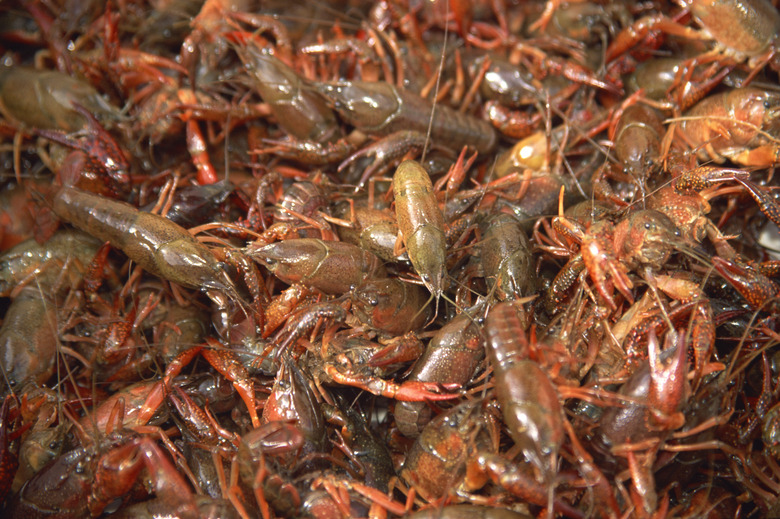How Do Crayfish Get Oxygen?
Though they are considered a delicacy in the southern United States and other areas, crayfish (also called crawfish) can easily be found in the wild, swimming in streams and rivers. Commonly caught for fun by children, and occasionally kept as pets, these small crustaceans have been known to confuse observers by walking on land and, in some areas, burrowing into the ground. It leads many to question the nature of the crayfish respiratory system – but the creatures are far more simple to understand than it seems.
TL;DR (Too Long; Didn't Read)
Crayfish, like all large crustaceans, use gills to gather oxygen. Found in the sides of the body and at the base of each leg, these gills behave like those of most aquatic creatures, pulling oxygen into the bloodstream as water passes through them. However, because crayfish gills are sensitive enough to pull moisture from the air, so long as it is kept moist and sticks to humid areas, the crayfish can move on land without issue.
Crayfish Gills
Crayfish Gills
The crayfish, sometimes called a crawfish or a crawdad, is a crustacean, closely related to the lobster and the shrimp. The structure of crayfish is similar to those of the lobster, featuring a hard calcium shell, claws and a pair of antennae used as sensory organs. As a larger crustacean, the crayfish exclusively uses gills to breathe: These gills can be found on the sides of the crayfish and at the base of each leg, identified as a fuzzy grey or brown organ. Crustacean gills pull oxygen into the bloodstream as water passes through them, but these gills are sensitive – surprisingly so.
Walking on Land
Walking on Land
The crayfish's gills are a specialized, sensitive organ: So long as the gills are moist, they are capable of pulling oxygen in through moisture in the air. This allows the crayfish to walk on land and, in the proper environments, cross surprising distances with enough humidity. Curiously, in parts of the midwestern United States there exists a species of crayfish known as a "terrestrial crayfish" or "land lobster." These crayfish spend most of their lives on land in areas with high water tables, and can do so because of their specialized gills. By burrowing into mud and damp earth, the crayfish are able to pull in enough moisture to breathe, even if they are far away from a lake, stream, river or pond. These crayfish puzzle people more than most and can be considered pests when the "mud chimneys" they create by burrowing dry in the sun and interfere with lawn mowers.
Cite This Article
MLA
Flournoy, Blake. "How Do Crayfish Get Oxygen?" sciencing.com, https://www.sciencing.com/crayfish-oxygen-10016579/. 25 July 2018.
APA
Flournoy, Blake. (2018, July 25). How Do Crayfish Get Oxygen?. sciencing.com. Retrieved from https://www.sciencing.com/crayfish-oxygen-10016579/
Chicago
Flournoy, Blake. How Do Crayfish Get Oxygen? last modified March 24, 2022. https://www.sciencing.com/crayfish-oxygen-10016579/
